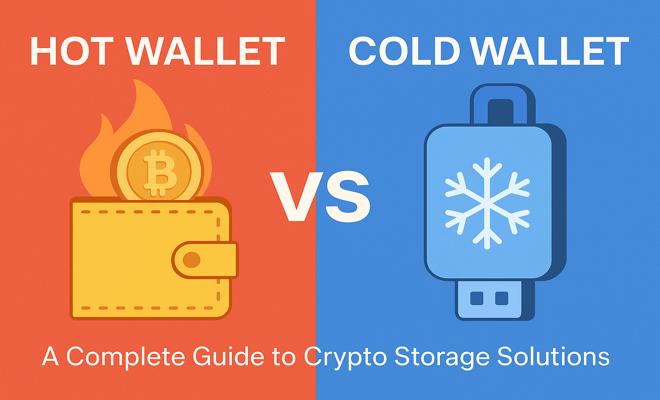
🔥❄️ Hot Wallet vs Cold Wallet: A Complete Guide to Crypto Storage Solutions
In the world of cryptocurrency, security and accessibility are key 🔐. Whether you're a seasoned investor or just starting out, choosing the right type of wallet—hot or cold—can make all the difference in protecting your digital assets. This guide will help you understand the pros, cons, and best use cases for each type of crypto wallet.
🚀 What is a Crypto Wallet?
A crypto wallet is a digital tool that allows you to store, send, and receive cryptocurrencies like Bitcoin, Ethereum, and many others. There are two main categories: hot wallets and cold wallets. Each has its own purpose and level of security.
🔥 What is a Hot Wallet?
A hot wallet is connected to the internet and is designed for frequent use. These wallets are ideal for traders or users who need to access their funds quickly.
✅ Examples of Hot Wallets:
- Mobile wallets (e.g., Trust Wallet, MetaMask)
- Desktop wallets (e.g., Exodus, Electrum)
- Browser extensions (e.g., MetaMask for Chrome)
👍 Advantages of Hot Wallets:
- Fast and easy access 💨
- User-friendly interfaces 🖱️
- Free to use (mostly)
⚠️ Disadvantages of Hot Wallets:
- Higher risk of hacking 🧑💻
- Vulnerable to malware and phishing attacks
- Requires constant security updates
❄️ What is a Cold Wallet?
A cold wallet is a type of wallet that is not connected to the internet. It's often used for long-term storage and is considered much more secure.
✅ Examples of Cold Wallets:
- Hardware wallets (e.g., Ledger, Trezor)
- Paper wallets (printed QR codes and keys)
- Air-gapped computers or USB drives
👍 Advantages of Cold Wallets:
- Excellent security 🔐
- Immune to online attacks
- Great for long-term HODLing 🐢
⚠️ Disadvantages of Cold Wallets:
- Less convenient for daily use 🕒
- Physical damage or loss can lead to access issues
- Initial cost for hardware wallets 💸
⚖️ Hot Wallet vs Cold Wallet: Comparison Table
| Feature | Hot Wallet | Cold Wallet |
|---|---|---|
| Internet Connection | Yes 🌐 | No 🚫 |
| Security | Medium | High |
| Ease of Use | Very Easy 👍 | Moderate 👌 |
| Best For | Daily trading | Long-term holding |
| Cost | Usually Free | May require purchase |
🛡️ Best Practices for Wallet Security
- Use two-factor authentication (2FA) where possible ✅
- Never share your private keys or seed phrases ❌
- Backup your wallets in multiple secure locations 💾
- Keep software up-to-date to avoid vulnerabilities 🛠️
💡 Conclusion: Which Wallet Should You Choose?
There's no one-size-fits-all answer. If you need frequent access to your funds and enjoy trading, a hot wallet is probably right for you. But if security is your top concern and you're investing for the long haul, a cold wallet is the way to go.
For maximum security and convenience, many crypto users use a combination of both 🔄. Store a small amount in a hot wallet for daily use and keep the bulk of your holdings in a cold wallet for safekeeping.
🔎 Still not sure? Explore our other guides on wallet security and storage tips on Bitmedia24.